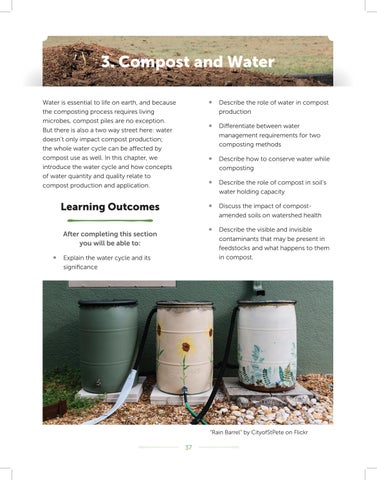3. Compost and Water Water is essential to life on earth, and because the composting process requires living microbes, compost piles are no exception. But there is also a two way street here: water doesn’t only impact compost production; the whole water cycle can be affected by compost use as well. In this chapter, we introduce the water cycle and how concepts of water quantity and quality relate to compost production and application.
•
Describe the role of water in compost production
•
Differentiate between water management requirements for two composting methods
•
Describe how to conserve water while composting
•
Describe the role of compost in soil’s water holding capacity
Learning Outcomes
•
Discuss the impact of compostamended soils on watershed health
•
Describe the visible and invisible contaminants that may be present in feedstocks and what happens to them in compost.
After completing this section you will be able to:
•
Explain the water cycle and its significance
“Rain Barrel” by CityofStPete on Flickr
37















